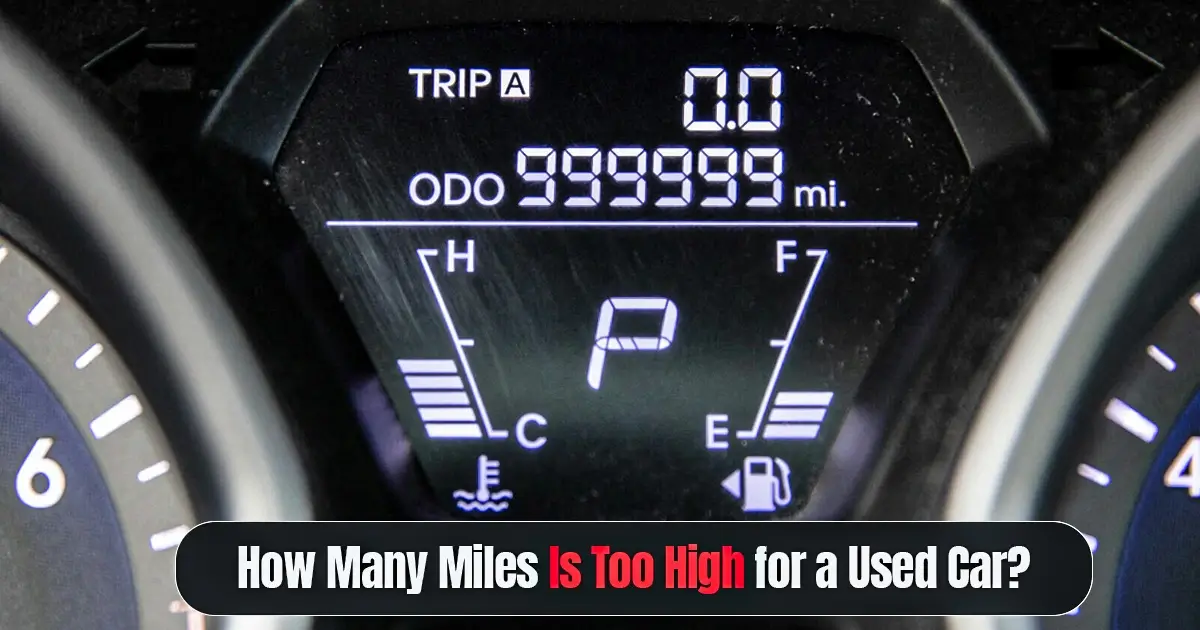When you’re hunting for a used car, mileage is one of the first things that grabs your attention. But here’s the real question: how many miles are too many? The answer isn’t as simple as one number. It depends on the car’s condition, maintenance history, and even the type of miles it’s driven.
Let’s break this down in a way that helps you make a confident, smart decision before you buy.
Why Mileage Still Matters (But Not Alone)
Mileage tells you how far a car has traveled, but it doesn’t tell the whole story.
A well-maintained car with 120,000 miles can be a better buy than a neglected one with 60,000 miles.
Think of mileage as just one chapter of a bigger story. The rest of the story includes service records, oil changes, driving habits, and environmental conditions.
For example, highway miles are generally easier on a car than stop-and-go city driving. A car that cruises smoothly on highways could have double the miles but still run better than one that’s spent its life stuck in traffic.
The Sweet Spot for Used Cars
Most experts agree that the average driver covers 12,000 to 15,000 miles per year. So, a 5-year-old car with around 60,000–75,000 miles is considered normal.
Cars with less than that are often marketed as “low mileage,” but don’t get carried away. A car with very low miles that hasn’t been driven much might have other problems like dried seals or rust in hidden areas.
Generally, a car with under 100,000 miles and a clean service record is a good balance between value and reliability.
When Mileage Starts to Raise Red Flags
Once a car passes 100,000 miles, things start getting interesting. That doesn’t mean it’s doomed, but wear and tear will be more noticeable. Major components like the timing belt, suspension, and transmission may need attention soon.
Cars reaching 150,000 miles or more are considered high-mileage. However, modern vehicles especially brands known for reliability like Toyota, Honda, and Lexus can easily pass 200,000 miles if cared for properly.
The key here is how well the previous owner maintained the vehicle. A high-mileage car with full service history is often safer than a low-mileage car with missing records.
Mileage vs. Maintenance: What Really Counts
You can think of mileage as a number and maintenance as the heart of the car.
If the heart’s healthy, the car can live a long life.
Ask for detailed service records before buying. Look for regular oil changes, brake replacements, and fluid top-ups. If these have been done on time, mileage becomes less scary.
You can also use tools like Carfax or AutoCheck to review the car’s history report. This helps you see if the car has been in accidents or had frequent repairs.
Also Read:
- Nearly 30% of UK Drivers Believe Car Tax Should Be Based on Mileage — Survey
- Why Planes and Boats Escaped the Luxury Tax But Cars Didn’t
- Australia’s Headlight Confusion: Authorities Warn Drivers After Viral $250 Headlight Rule Goes Wild Online
- 2025 Hyundai Venue Facelift Launched in India – Full Details, Variants, and Price
- Royal Enfield Bullet 650 Unveiled at EICMA 2025: A Classic Legend Returns
How Technology Changed the Mileage Game
Cars today are engineered better than ever. Engines, transmissions, and electronics last longer thanks to better materials and smarter design.
For instance, a modern hybrid or electric car can easily handle 150,000–200,000 miles if serviced on time. On the other hand, older vehicles from the early 2000s might start struggling beyond 120,000 miles. That’s why it’s better to focus on model reliability instead of chasing a specific mileage number.
Real-World Example: Two Cars, Same Price
Let’s say you’re choosing between:
- Car A: 2017 Honda Accord, 85,000 miles, full service record
- Car B: 2019 Ford Fusion, 45,000 miles, missing service history
On paper, Car B looks newer and has fewer miles. But if it hasn’t been maintained properly, Car A could give you far fewer headaches and lower repair costs. Mileage is important, but history wins every time.
Expert Insight: Set a Mileage Budget, Not a Fear Limit
Instead of avoiding high-mileage cars altogether, set a “mileage budget” based on your usage.
If you only drive 6,000 miles a year, even a car with 120,000 miles can serve you well for many years. But if you drive long distances daily, aim for something under 80,000 miles for peace of mind. A smart buyer doesn’t chase the lowest number. They chase the best value per mile.
It’s About Care, Not Just Count
Mileage gives you a hint, not the full truth. A car with 150,000 miles that’s been loved and maintained can be a better deal than one with 70,000 miles that’s been ignored. Always inspect, research, and test drive. Focus on how the car feels, how it’s been cared for, and how it fits your needs.
